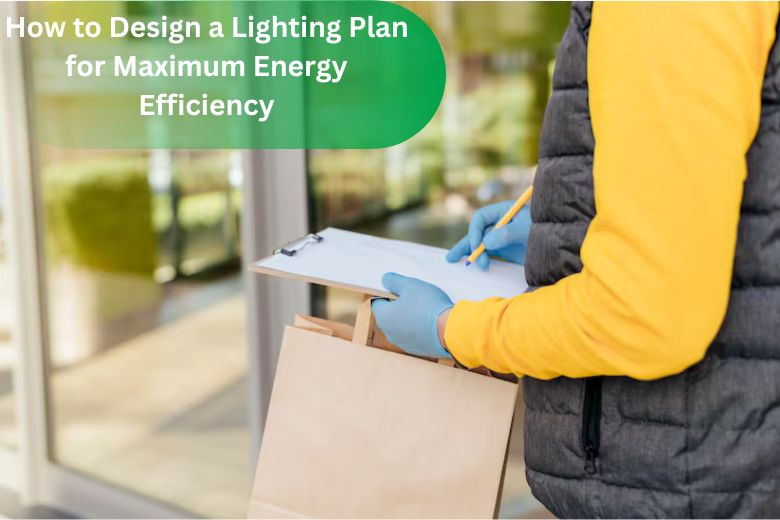How to Design a Lighting Plan for Maximum Energy Efficiency
Posted on September 13, 2024 by Admin

A good lighting plan is essential for energy efficiency, reducing energy consumption, and meeting the growing demands for sustainability. A well-thought-out lighting design not only enhances the beauty of a space but also ensures functionality and cost-effectiveness. Working with an experienced Electrician Service Provider can help you create an efficient lighting setup that maximizes savings and sustainability. Here’s how you can design a lighting plan for maximum energy efficiency at your home or business.
1. Assess Your Lighting Needs
Begin by assessing your lighting needs for maximum energy efficiency. Think about what each room is used for, or spaces and work areas, along with what kind of lighting needs to be in them. This could include task lighting in places such as the kitchen and your home office and ambient lighting in the living and sleeping spaces. Knowing the demand that each space has will let you pick the most suitable and efficient lighting solutions.
2. Energy-Efficient Light Bulbs
The adoption of energy-efficient light bulbs remains one of the surest ways through which one could achieve energy efficiency. Of the many that may be employed in any lighting plan for the delivery of maximum energy efficiency, LED lights are among the best since they consume very little energy as opposed to the incandescent bulbs. Moreover, they last way much longer than the latter; hence, their replacement will not be that frequent.
3. Natural Lighting Utilization
Incorporating natural light in the design will help reduce one's artificial lighting needs to a great extent. Workstations and living areas, therefore, need to be located next to windows. Use light-colored curtains or blinds to ensure maximum penetration of sun rays into a room. Skylights and light tubes allow more natural lighting into those areas where there are no windows, hence minimizing usage of artificial light.
4. Dimmer Switches and Motion Sensors
Other devices on the lighting plan are dimmer switches and motion sensors. The dimmer switch can help an individual adjust the light in a building to suit his or her needs, thus cutting down on energy use by the amount of light that he or she does not need. It also increases the life of the bulb. Another is motion sensors, whereby the lights turn off automatically if there is no movement and turn on while approaching. All of these functions reduce energy wastage and provide more efficiency in general.

5. Use Smart Lighting Controls
The next best way of wringing the most energy efficiency out of your lighting plan has to be smart lighting control. Smart lighting systems, along with scheduling plans or scenes via your smartphone application, make use of voice commands. These involve smart home assistants like Amazon Alexa or Google Home to enable you to access your lights remotely. You will be at liberty to create schedules, scenes, and adjust brightness at whim to suit preference and save energy. Real-time monitoring of energy use is one of the smart-lighting controls, outlining what needs action.
6. Light Fixture and Placement Optimization
Proper locating or siting of lighting fixtures will help maximize energy efficiency. Use a mix of ceiling-mounted, wall sconces, and table lamps such that light is spread uniformly without over-lighting. Let task lighting direct the need for lighting to particular tasks, and ambient lighting illuminate the space generally. Allow for appropriately scaled fixtures for the space, and use reflectors or diffusers for effective direction of light.
7. Regular Maintenance
Such a lighting plan would involve regular maintenance to ensure maximum energy efficiency. Clean light fittings and bulbs regularly to keep them bright and efficient in their functioning. Replace burnt-out or dimming bulbs in time to avoid unnecessary wastage of energy. Check for faults with switches, sensors, or controls and rectify them immediately to ensure optimum performance.
8. Energy-Efficient Lighting Design to Consider
In designing a lighting plan, consider your space's overall energy-efficient design. Light-colored paint and reflective surfaces help disperse light more effectively, reducing the need for additional lighting. Implement an energy-efficient approach by minimizing the use of direct lighting and maximizing natural light whenever possible. Consulting an experienced Electrician Service Provider can ensure the optimal placement of fixtures and the integration of energy-saving solutions for enhanced efficiency and sustainability.
Also Read :
How to Finance Your Roof Replacement: Loans, Grants, and Insurance
Roof Safety Tips for Homeowners
The Impact of Algae and Moss on Your Roof
How to Deal with Roof Leaks During a Storm
How to Create an Electrical Maintenance Plan for Your Home
The Benefits of Green Roofs for Urban Homes
How to Finance Your Roof Replacement: Loans, Grants, and Insurance
Faqs
-
1. What is the needed lighting capacity per room?
Try to work out the quantity of light needed within each room? Consider the purpose of the room. For rooms with work going on, a kitchen or office, then there will be more need for task lighting. Rooms where the usual activity will take place the living rooms will require more deutlich ambient lighting. Make an approximation of how much lighting each activity ity in each room will require.
-
2. What are some benefits to using LED bulbs in my lighting plan?
Some benefits of using LED bulbs over other types of bulbs include massive money savings because of the very low energy consumption factor, long life, and better efficiency since they do not produce much heat. They keep your energy bills minimized and minimize the regular replacement that usually should happen.
-
3. How can I maximize the natural light in my home?
Maximize on natural light by: Keeping the workplaces near windows Adopting light colored curtains that will let through much sunshine Skylights or light tubes for those places without windows It will help reduce artificial lighting and hence enhance energy efficiency.
-
4. How do dimmer switches and motion sensors play into energy efficiency?
Dimmer switches will be able to dim as needs require, hence saving energy. Motion sensors will only switch the lights on in the presence of any motion and turn off once there is no one; hence, guaranteeing that light can't stay on unless needed. Both will help drive savings and efficiency under energy.
-
5. How do smart lighting controls enhance energy efficiency?
Smart Lighting Control remotizes light dimming using an app or voice instructions, creates schedules and scenes, and monitors energy use while automatically adjusting the output of light in response to needs, thus reducing energy consumption in areas that do not need it.
Recent Post
- Top Plumbing Service Providers in Arizona, USA
- Top 10 Electrician Service Providers in Alabama, USA
- Top 20 Roof Repair Service Providers in Alabama, USA
- The Role of Roof Insulation in Energy Efficiency: Tips and Tricks
- Understanding Roof Damage from Wildlife and How to Prevent It
- How to Choose the Best Roofing Contractor for Emergency Repairs
- Roofing Maintenance for Historic Homes: Preserving Architectural Integrity
- The Importance of Proper Attic Ventilation for Roof Health
- How to Identify and Prevent Roof Mold and Mildew
- The Best Practices for Removing Snow from Your Roof